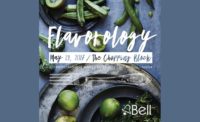Taste Masking: Trends and Technologies

“Just a spoonful of sugar helps the medicine go down; in a most delightful way...” You might recognize these linesfrom childhood. This quote, taken from the lyrics of the famous musical Mary Poppins, is the simplest way to explain the phenomenon of taste-masking. In this example, the sugar is used to mask the bitter off-taste of a medicine, making it easier for the children to drink it.
Off-taste is a common and costly problem for the food industry. For many years, the use of salt, sugar or spices helped mask off-tastes, such as bitter or sour. The tendency to replace basic ingredients like salt or sugar, as well as the increased use of functional ingredients and nutraceuticals, has increased the need for new taste-masking strategies.
Undesired tastes can be intrinsically present in foods. The most common examples are bitter tastes from vegetables, such as brussel sprouts or broccoli, or strong sourness in certain foods, such as orange juice or yogurt. Other sources of off-tastes can be related to microbial metabolites, enzymatic degradation, heat treatment, oxidation of lipids or by the addition of ingredients such as vitamins, minerals or antioxidants, which can be associated with lingering off-notes. As some of the off-tastes are difficult, if not impossible, to control, the off-taste is many times “tolerated” within the product. Strategies to reduce off-tastes in food are either to eliminate the source of off-taste (e.g., through fermentation or hydrolysis), or to mask the off-taste (e.g., by adding more of one ingredient, such as sugar or salt). In foods, there are many naturally occurring bioactive compounds that elicit bitterness, yet have positive health effects (e.g., flavonoids, polyphenols, peptides, minerals or terpenes). Improving the taste profile of the food by removing these compounds eliminates their potential health benefit for the product. Therefore, in these cases, effectively masking off-taste notes, along with flavor profile enhancement, is key to the consumer acceptance of new products.
In order to effectively mask a taste, developers first need to understand the type of interactions that can occur in a food matrix, as well as interactions occurring in the mouth. From a perceptual point of view, taste-masking can occur at two different levels: they can occur in-mouth (peripheral interactions; e.g., taste inhibition) or at the brain level (central cognitive interactions; e.g., mixture suppression). Techniques used for taste-masking are based on these two phenomena, but can also include other technologies for eliminating the source of the undesired taste, such as encapsulation or target elimination of the bitter compound. Here are described three approaches that can be used for targeted masking.
Taste Inhibition (Peripheral Interactions)
The human gustatory system is capable of identifying five major taste qualities: sweet, sour, salty, bitter and umami (savory). Different receptors and transduction mechanisms are involved in the detection of each taste quality; when two compounds are placed in the mouth, a number of possible interactions can happen. There is potential of one compound to interfere with taste receptor cells or taste transduction mechanisms associated with another compound, which could lead to enhancing or suppressing the taste. Many efforts have been focused on finding blockers for specific tastes, such as bitter, as it would provide a means for reducing off-taste. However, the fact there are around 25 putative bitter receptors makes it complicated to find a single, universal, bitter blocker. Nevertheless, there are several compounds that are capable of efficiently blocking specific taste qualities. Examples are extracts of Gymnema sylvestre or ziziphins for sweet taste blocking and lactisole (Na-2,4-methoxyphenoxy-propanoate), a compound that not only blocks sweet taste but has also been shown to reduce umami perception (see chart “Blocking Taste Perception”)1,2. Other taste inhibitors include sodium and zinc salts which, at certain concentrations, have been shown to suppress bitter taste3-5.
Research in this area has recently focused on receptor-based assays, where different compounds are tested directly on the target receptor and are screened for either activation or suppression of the taste signal. The downfall of this technology is that sometimes the compounds found to have activity cannot be used for human consumption, due to safety concerns. NIZO food research takes a different approach to overcome this problem, which consists of using food-grade fractionation techniques to screen for naturally occurring taste blockers with a trained sensory panel. (See illustration “Evaluating Taste-taste Interactions.”) Natural sources can consist of any fruit, vegetable, spice or fermentation product. This holistic approach, when combined with historical knowledge of natural resources, promises the delivery of natural solutions for taste-making.
Mixture Suppression (Central Cognitive Interactions)
Tastants contained in a mixture often evoke responses different from those elicited when the tastants are presented alone. When one taste (masker) is strong enough, it can completely mask another taste (target) of different quality. This principle is exemplified in the Mary Poppins play, where sugar is used to mask the bitter taste of a medicine. In this particular case, the sugar is not necessarily interacting with bitter receptors in the mouth; the suppression is happening at a higher level, where taste and smells are normally integrated to deliver what is known as flavor. Mixture suppression is taking place in the brain. But suppression is not restricted to only taste-taste interactions. One could think that if aromas are capable of enhancing certain tastes (e.g., furaneol has been shown to enhance sweet taste), then it could also be expected that certain aromas can suppress taste perception. Such are the cases of angelica oil aroma or damascene, which have been shown to suppress sweet taste6.
Mixture suppression as a technology has only recently taken importance. Masking off-tastes through mixture suppression has historically been achieved by trial and error. At NIZO, the company has developed a new screening tool that allows a systematic screening of aroma/aroma and aroma/taste interactions. This technology, named Olfactoscan® (see illustration “Aroma Interactions”), allows continuous delivery of an aroma or taste pulse that is coupled with a stream of different aroma compounds and delivered at controlled times to a panelist for evaluation. Using this tool, NIZO has been able to screen for compounds to mask a typical potato off-flavor sometimes present in orange juice and milk products7. The masking compound octanal already exists in most natural products or ingredients. This example demonstrates that the olfactoscan can systematically and efficiently screen for masking agents contained in food-derived aromas.
Masking by Encapsulation
When taste inhibition or mixture suppression fail to render the optimal taste profile and removing the bitter component is still not an option, there are other strategies that can be applied. Masking bitter taste through encapsulation can be an important solution for fortified foods. The two main technologies available for micro-encapsulation are spray-drying of emulsions and coacervation. Microencapsulation by complex coacervation results from the ability of a biopolymer complex to form a layer around the core material (in this case the bitter compound), which prevents it from being tasted in the food. R&D programs at NIZO have shown that microencapsulation by complex coacervation results in efficient masking of the bitter taste. An example of this application was done for naringin, a bitter compound present in oranges. After microencapsulating naringin through complex coacervation, the bitter taste was barely detectable. (See graphic “Bitterness Microencapsulated.”)
Advancement in the field of flavor perception has allowed understanding of the different interactions that can occur when food is consumed. The more sophisticated eating behaviors become, the more technologies are needed to deliver good-tasting foods. The strategies, developed at NIZO food research, make cost effective screening for new masking agents a reality. Masking off-tastes is one aspect for gaining satisfied and loyal customers, as first impressions are always key for consumer acceptance.pf
Feature photo courtesy of © iStockphoto /Slobodan Vasic
References:
1.Schiffman SS, et al. 1999. Selective inhibition of sweetness by the sodium salt of +/- 2-(4-Methoxyphenoxy) propanoic acid. Chem Senses. 24:439-447.
2. Galindo Cuspinera V and Breslin PA. 2006. The liaison of sweet and savory. Chem Senses. 31(3):221-225.
3. Breslin PA and Beauchamp GK. 1997. Salt enhances flavour by suppressing bitterness. Nature. 387(6633):563.
4. Keast RS and Breslin PA. 2002. Modifying the bitterness of selected oral pharmaceuticals with cation and anion series of salts. Pharm Res. 19(7):1019-1026.
5. Keast RS and Breslin PS. 2005. Bitterness suppression with zinc sulfate and na-cyclamate: a model of combined peripheral and central neural approaches to flavor modification. Pharm Res. 22(11):1970-7.
6. Stevenson RJ, et al. 1999. Confusing tastes and smells: how odours can influence the perception of sweet and sour tastes. Chem Senses. 24(6):627-635.
7. Burseg K and de Jong C. 2009. Application of the Olfactoscan method to study the ability of saturated aldehydes in masking the odor of methional. J Agric Food Chem. 57(19):9086-9090.
Looking for a reprint of this article?
From high-res PDFs to custom plaques, order your copy today!






